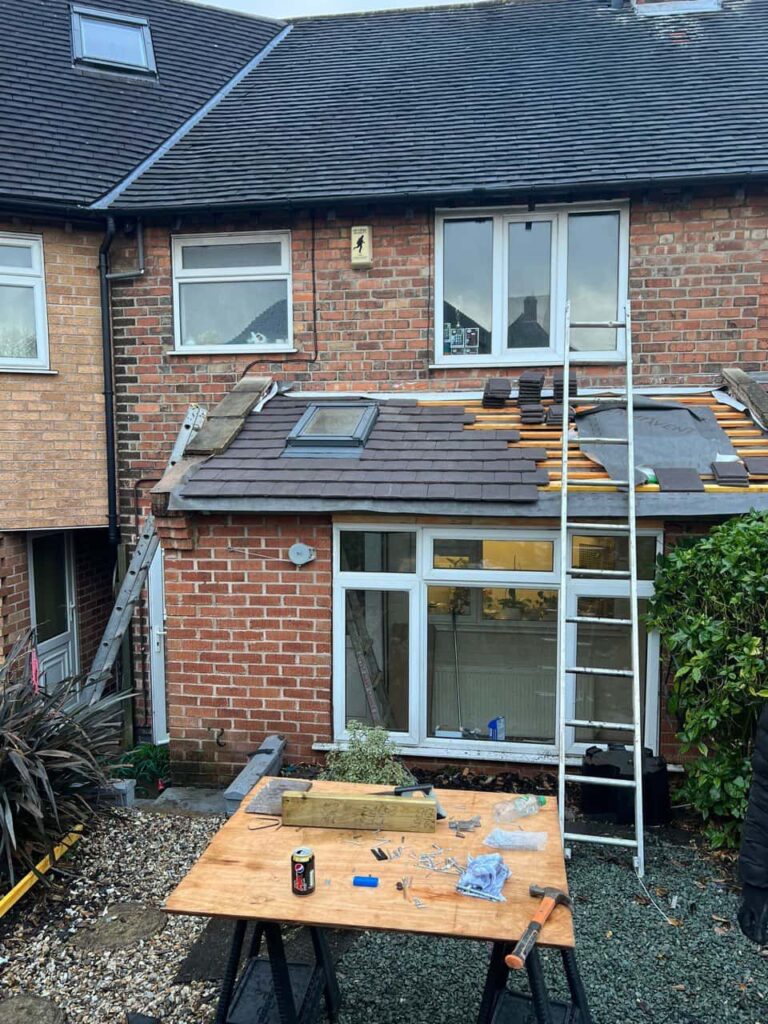Introduction: For any roofing project, compliance with local building codes is crucial, not only to ensure safety and quality but also to avoid legal and financial repercussions. This is especially true for flat roofs, which have specific challenges and requirements due to their unique structure and potential for water pooling. This blog post aims to demystify the roofing code requirements for flat roofs, helping homeowners, builders, and developers in Broughton Astley make informed decisions during construction or renovation projects.
Key Roofing Code Requirements for Flat Roofs
- Slope and Drainage:
- Even though called ‘flat’, these roofs must have a minimum slope, usually between 1/4 to 1/2 inch per foot, to facilitate proper drainage. This is essential to prevent water accumulation, which can lead to leaks and structural damage over time.
- The code also specifies the number and capacity of drains, ensuring that water can be efficiently removed from the roof surface.
- Materials and System Design:
- Building codes often specify the types of materials that can be used on flat roofs to ensure they are durable and fire-resistant. Common materials include EPDM, TPO, and modified bitumen.
- The installation of these materials must follow specific procedures to enhance their longevity and effectiveness, particularly regarding insulation and vapour barriers.
- Load Resistance:
- Codes will dictate the load-bearing capacity of the roof, taking into account not just the weight of the roofing materials but also potential loads from snow, water, and maintenance operations.
- This requirement ensures that the roof structure is adequately designed to support additional loads without compromising the building’s safety.
- Wind Uplift Resistance:
- In areas prone to high winds, codes will include requirements for how roofing materials must be secured to the roof deck to prevent wind uplift, which can cause significant damage.
- These standards help ensure that roofs are capable of withstanding local wind conditions.
- Fire Resistance:
- Roofing materials on flat roofs need to meet certain fire-resistance standards, categorised into classes A, B, or C, with Class A materials offering the highest resistance.
- This is critical to prevent the spread of fire, protecting both the building and its occupants.
- Energy Efficiency:
- Many regions now include requirements for the energy efficiency of roofing materials, reflecting the growing emphasis on reducing energy consumption.
- These standards typically involve the thermal resistance (R-value) of the insulation used in the roofing system, aiming to reduce the heating and cooling demands of the building.
Navigating Local Regulations
- Consult Local Building Codes: Always start by consulting your local building regulations. These can vary significantly depending on the region, as different areas will have different concerns primarily based on climate and environmental factors.
- Permits and Inspections: For any roofing project, obtaining the necessary permits is a must. These projects typically require several inspections to ensure compliance with the building codes from the initial construction phase to the final installation.
- Professional Guidance: It is highly advisable to work with a professional roofing contractor who is familiar with local codes and requirements. Their expertise can ensure compliance, improve the quality of your roofing project, and help avoid costly mistakes or reworks.
Conclusion: Understanding and adhering to roofing code requirements for flat roofs is essential for ensuring the safety, durability, and legality of your building project. By taking into account factors such as slope, material specifications, load resistance, wind uplift, fire safety, and energy efficiency, you can ensure that your flat roof is built to last and compliant with all local regulations.
Call us on: 01455 241 493
Click here to find out more about Broughton Astley Roofing Repairs
Click here to complete our contact form and see how we can help with your roofing needs.

